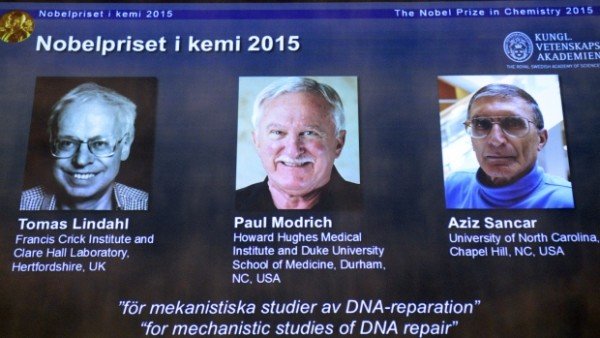This year’s Nobel Prize in Chemistry was awarded jointly to Tomas Lindahl, Paul Modrich and Aziz Sancar “for mechanistic studies of DNA repair”.
Tomas Lindahl, Paul Modrich and Aziz Sancar were named as the winners on October 7 at a news conference in Stockholm, Sweden.
Their work uncovered the mechanisms used by cells to repair damaged DNA – a fundamental process in living cells.
The prize money of eight million Swedish kronor ($970,000) will be shared among the winners.
“It was a surprise. I know that over the years I’ve occasionally been considered for a prize, but so have hundreds of other people. I feel lucky and proud to be selected today,” Tomas Lindahl, from the Francis Crick Institute in the UK, told journalists.
Claes Gustafsson, from the Nobel Committee, said the recipients had “explained the processes at the molecular level that guard the integrity of our genomes”.
DNA is open to an onslaught of different phenomena which can generate defects in our genomes.
UV radiation and molecules known as free radicals can cause damage. Furthermore, defects can arise when DNA is copied during cell division – a process that occurs millions of times each day in our bodies.
“Cigarette smoke contains small reactive chemicals, which bind to the DNA and prevent it from being replicated properly – so they are mutagens. And once there is damage in the DNA this can cause diseases including cancer,” said Prof. Tomas Lindahl.
A host of molecular systems continuously monitor and repair our genetic information. The three new laureates mapped in detail how these mechanisms worked.
